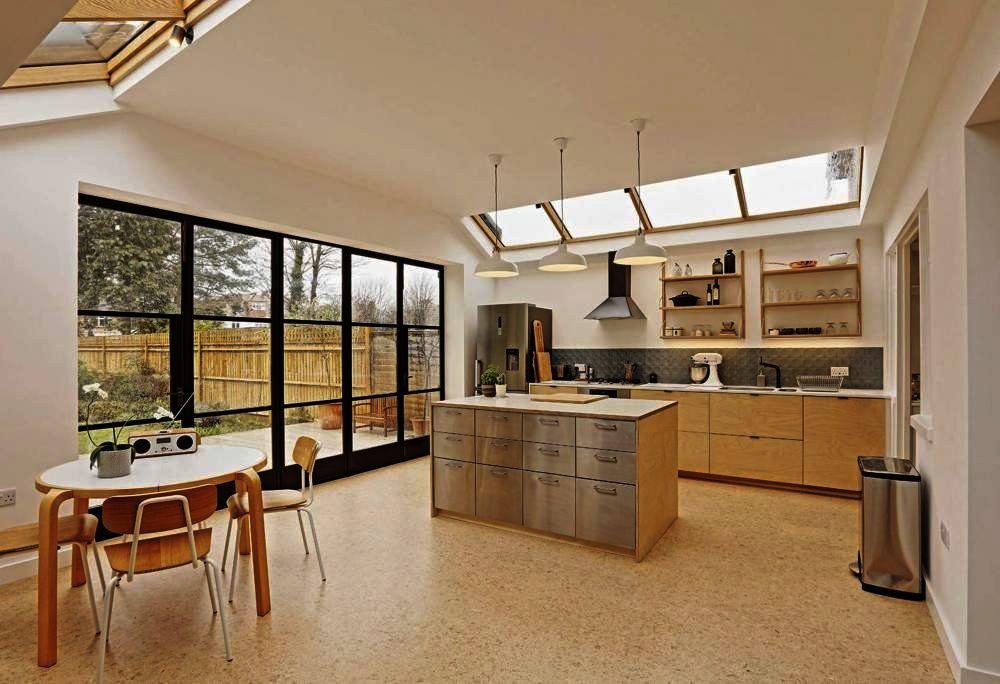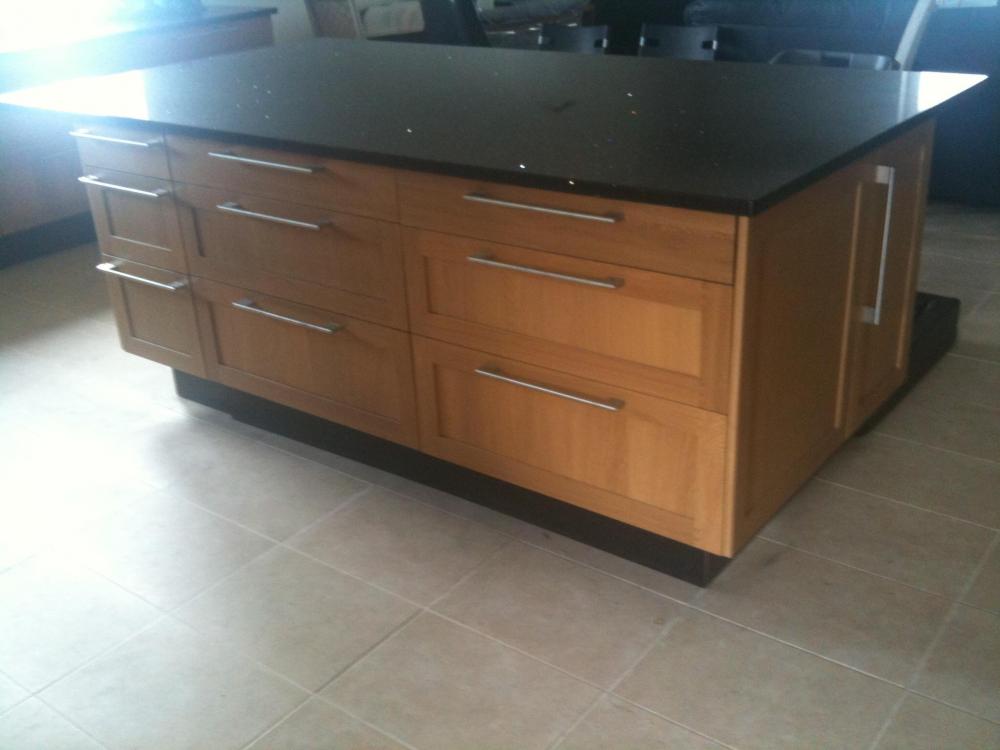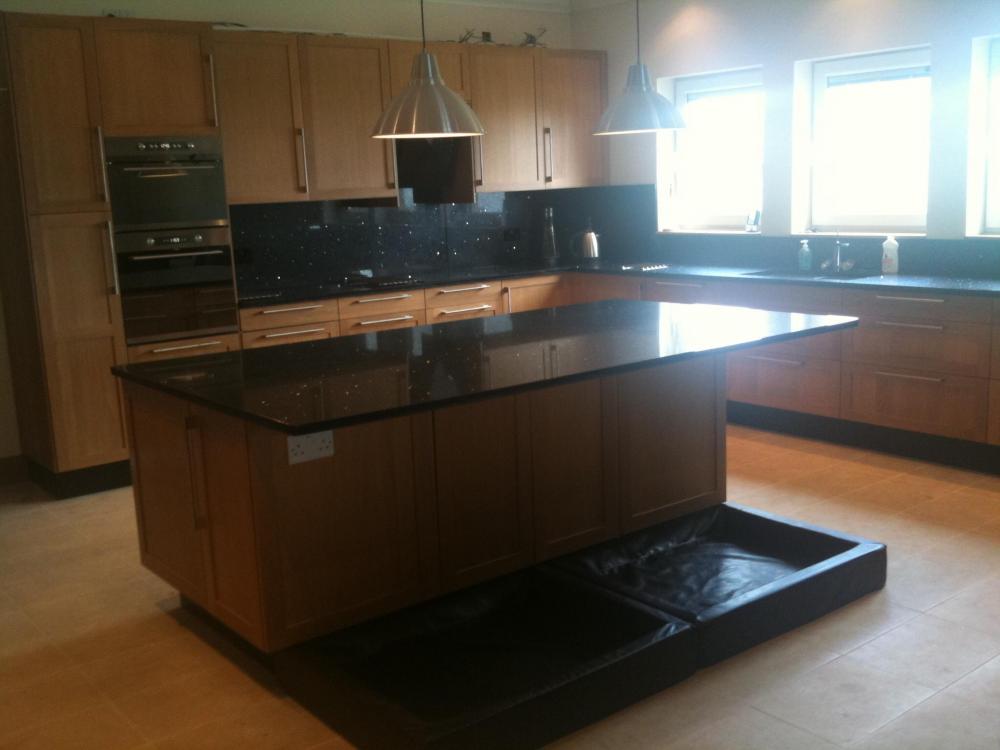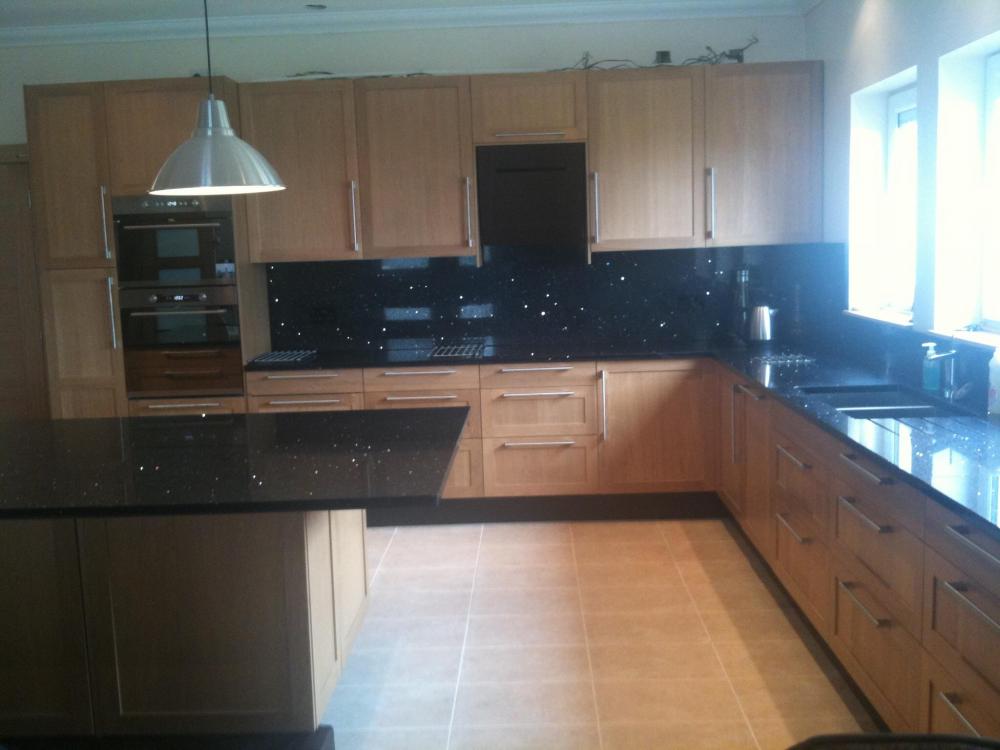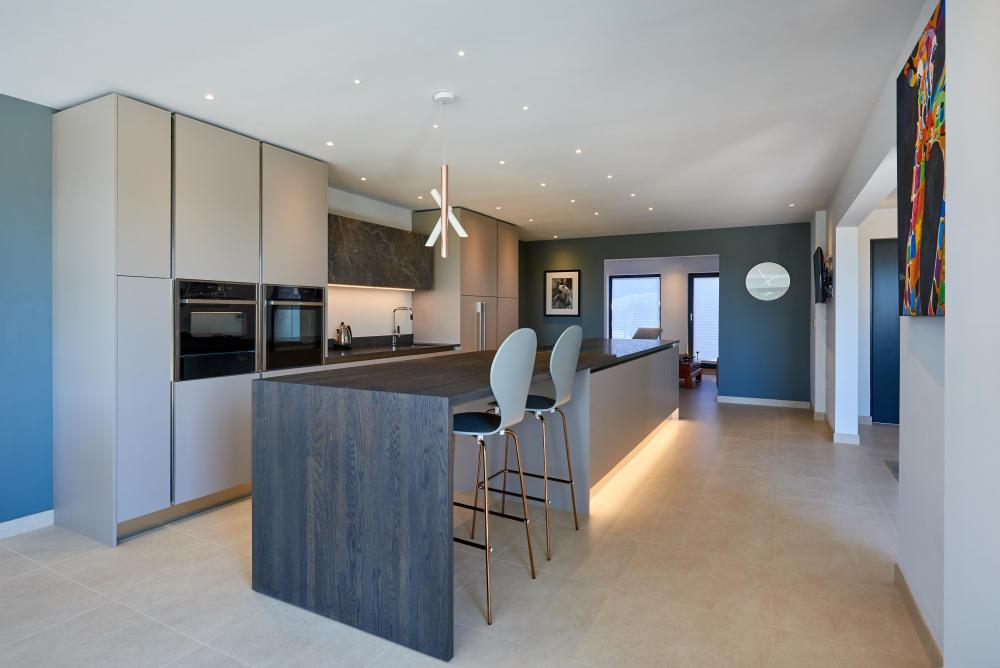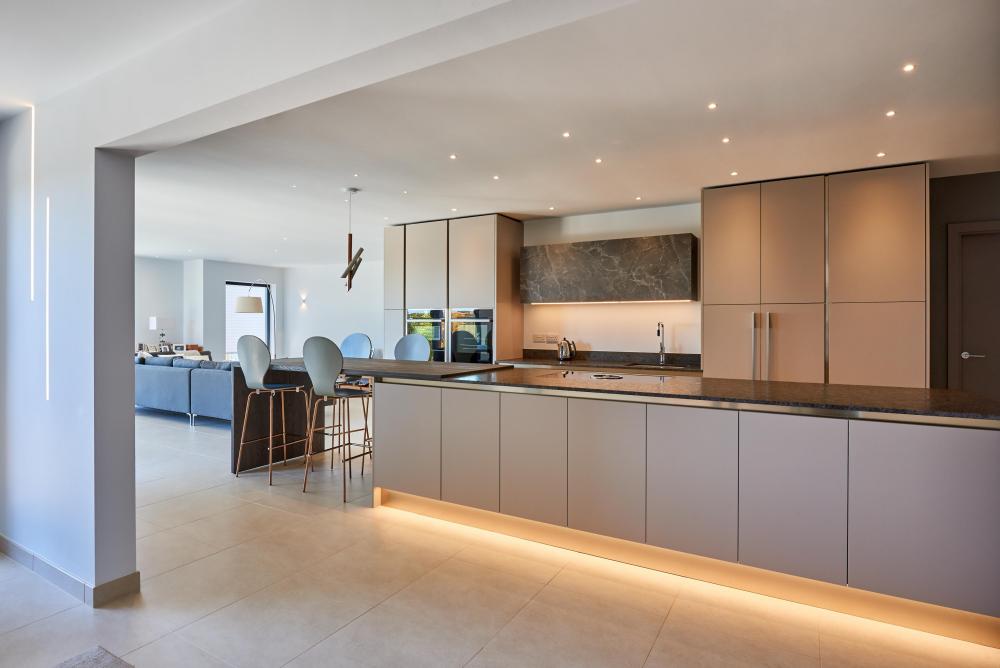Leaderboard
Popular Content
Showing content with the highest reputation on 04/30/19 in all areas
-
Having been away for a while, it is interesting to see that this topic is still discussed. What does intrigue me is that some people think that shifting from fossil fuels to renewables can only harm the economy. What is this based on? "The stone age didn't end because we ran out of stones." @epsilonGreedy Do you know why CO2, or any other molecule, can trap heat? I suspect you don't. As for cars, back in 1996, I had a company Citroen that easily did 60 MPG, it was an AX 1.4 Diesel. Was dreadful. My own car was a 1991 Peugeot 309 Turbo Diesel that consistently did 50 MPG, and in those days it only had two speeds, zero and maximum.3 points
-
Those are two very different photos (or 3d models of your proposed kitchen?), and I want to go on a perambulation before talking about kitchens. This is something I am thinking about this AM, in the context of marketing a student property. I thought I would do my thinking here, if that is OK. These are musings, and I am quite open to being shot down in flames. One is perhaps a good example of a cheap-and-cheerful which can be replaced by 2 in a decade. First of all - DRESSING AND PRESENTATION. Need to filter out the presentational differences before looking at the substance. How much is the presentation affecting your perception? The light is different in the pics. The first looks washed out and with less variety of colour. Compare the histograms - (this is luminosity, but colours all also have a far narrower depth of palette in the first than the second). Your "next level" piccie is on the left. What does that mean? You can see the difference in the histogram. To me the one piccie looks like a snapshot, and the second looks dressed (in addition to the furniture differences) fro eg Instagram or Dezeen. I would say that is an artefact of our culture now being more universally visual (as opposed to in islands and subsectors such as Architects or Artists or Photogs or Models). In a way the first looks like an aspirational room from Ikea Gen 1 (say 1975 in design environments, as popularised by early Ikea). The second is more sumptuous with a greater range of colour, which we are now getting perhaps ith the 1940s/50s (rather than 1960s/early 1970s) being in fashion. I think that just with a small adjustment to the 'old gen' kitchen makes it more attractive to 2019 eyes. All I have done is dialed in richer colours via changing the Gamma for the photo. Here is the luminosity histogram for this pic: Content Differences However, there are also some photo / lighting differences - the second one is photographed to include the snug, and more sitting places. The first one says "kitchen with nowhere to relax", like something out of a Hall of Residence which is primarily functional; the second one is clearly a home. (This is one way my letting agent describes their philosophy of designing / marketing student houses). These are probably subliminal, but communicate a different environment where the viewer might be ore comfortable existing. (A great example of this was when digital artists started displaying their Gicle images on Ebay as if hung on a wall behind a sofa by plonking a floating sofa at the bottom of the pic. I first noticed that in about 2005 when on Ebay when a photo-printing blogger pointed it out). There is also (not sure whether intentional) the classic "before and after" manipulated photograph thing as you saw on Trinny and Susanna. Compare those 2 kitchen piccies to this weightloss before and after: There is a weightloss, but also mucho photo-shenanigans. On the left - flat frontal lighting, no highlights to give depth or definition (eg rh picture, lighting from rhs giving a halo to skin and boob), body and bounce in rh hairdo not there in lh piccie, stomach on rhs tensed (LH to me looks relaxed), rh picture has model smiling and engaged (lh has just been told her puppy got run over), variation in colour/tone on rhs and depth of colour palette ( not on left) etc. It may be instructive to compare the colour histograms. And those arms and waist look Photoshopped. There is a lot similar going on in your 2 piccies - especially eg flat colours in the first compared to the second, and perhaps lighting. But that is also true of the design. Not saying that it is deliberate as in the model piccies, but it could be affecting the subliminal perception (does with me). So, where are we? Underneath all of that, to me the second one looks about twice as expensive eg compare the material for the island worktop, or the designer staircase. But there is a big difference bewreen the 2 piccies before we get to "what is in the kitchen". So my comments are: 1 - Visit as well as look at pictures. 2 - "Klotzen nicht Kleckern" - don't spend on everything. Work out the bits that matter to you (eg by working out where you spend your time or use most, and spend money on that). Spend the money where you will often touch the quality. 3 - Focus on reducing price for a given quality , not on buying cheaper things with extra gewgaws. 4 - Think about external factors - how you use the rooms etc, layout and so on. Fabric.First. 5 - Really pay attention to the detail. 6 - As for Designers etc, you need someone to facilitate your process with their skills, not someone who will tell you what to do. 7 - For colours, a limited range of contrasting colours with different tones, rather than a range of shades of similar colours. The current Renovate Don't Relocate does this well (I think it is a product of murderous Stamp Duty in London). You also get to see a TV series with Sarah Beeny not pregnant. For an example - I have an expensive (£600 bought online for £400) sink with a non-standard drainer-sink-halfsink arrangement as I use it a lot, and like to be able to flap around with guts and gore in the halfsink *away* from the drainer. I think you start with your own philosophy and perhaps a "statement of needs", then evaluate different things against that. "Next Generation Kitchen" is not a statement of needs - unless you are a Boutique Hotel. Buzzword-driven kitchen design (which I do not think you are doing except a list as a way to provoke debate) ends up with a lottery-winner's gin palace or a City-Boy's never-used swank pad kitchen; it's a kitchen version of a trophy-wife. Sorry for the long post. Hope it was useful. Ferdinand3 points
-
2 points
-
Maybe he just did it wrong. Sometimes a fix is the right one but it has to be backed up with other policy. The JJ appear to be generally upset at life chances and the past thirty years of those they regard as "elites" getting it all their own way. I think their rhetoric is a bit extreme but it holds a grain of truth. It might be time for the upper and upper middle classes to begin paying up. I think this is a false dichotomy. The entire history of human development suggests we can find a way, and all through history there have been people saying "it's the end" - Malthus etc. They were wrong then and they are wrong now, because a fixed pie mindset exists when economic value is considered. TBH installing insulation is probably not to the benefit of global corporations. It reduces wasteage and is purchased once. It's an example of building wealth rather than perpetuating wasteful rentier expenditure. The "they're telling you to turn your thermostat down" is exactly the kind of finger pointing the deniers continually get away with. But it's very limited; it plays on our inability to think outside of our context. I think we should think bigger. We should think about how to engineer our way out of this. Fix the problems, so we don't even have to put up with switching off the heating. Put in place long term solutions. Build wealth such as a high performance building stock. We've put a man on the moon before, I think we can insulate houses. Last time I looked, retrofitting the entire housing stock to a high level is very expensive, but probably not a lot more than HS2. I know what I would prefer, and which would drive better economic outcomes.2 points
-
Not a scientist but look what happened to Roger Scruton - sacked for - what Twitter thought was - his opinion. Quite literally sacked because someone took a conflation of statements he made, distorted them and created a Twitter storm. Now - even aside of that part, even IF his opinions were as stated (they weren't), would that be a sackable offence? well - to answer your question @AnonymousBosch - yes, I think scientists with the 'wrong' view or research may well be either denied from a job or sacked once they provide a controversial paper that is contrary to current 'enlightened' thinking. I don't doubt this pattern is being repeated more out of the public eye. I'm waiting on my contract to be terminated because I've resisted doing 'Diversity and Inclusion' training.2 points
-
2 points
-
We actually had a RAT get in an old sofa when we first moved in. Gained access to the lounge from under the floor via oversize pipe holes in the walls. Give the cat it's due it did sit and point saying "Oh look a RAT!" Missus moved out to her Mum's for a few days with the baby. Anyone know where I can get another rat?2 points
-
This may be of use to some people and of interest to others. Certainly I could not find much information before I embarked on our build and it was a bit of a leap in the dark. We designed our house with a swimming pool. It is quite an extravagance but my daughter and I really enjoy swimming and messing about in the pool and it is a luxury I have always fancied. The pool has now been up and running for the past couple of months and I am extremely pleased with it. The installers did a very professional job. As always I tried to make sure that there was as little maintenance as possible required. The filtration system by a company called DA-Gen is all automatic. In the last two months all I have had to do is put a pool cleaning robot like a Roomba in the pool every week and it polishes it up. Other than that there has been abolsutely zero maintenance. The installer told me that historically they would visit a pool once a month. They will probably visit mine three times in the first year and then less after that. The main job will be changing over the chemicals, and just checking everything is working. The pool automatically tests the pH level and adjusts as necessary. The pH is set at 7.2. The chlorine is set at 0.5 ppm which is the same as the local drinking water. The pool creates chlorine from salt when necessary and there is no chlorine smell or taste. The pool is from a company called Niveko. It is a one piece polycarbonate pool and came as a single piece on the back of a truck from the Czech Republic. The pool is 8.9m long, 3.4m wide and 1.3m deep. Thus it contains around 40,000 litres of water. I spent some time at the pool in the gym and reading advice from owners in America on what size to buy. Traditionally pools are twice as long as they are wide, but I wanted a pool that was long enough to swim lengths. Having tested out the gym pool I reckoned I needed at least 8m. If I could not get permission for this much floor space I would have investigated an endless pool where you swim into a current. Depth wise people recommended that a deep end was pointless as it was impossible to stand and play games. we often stand and play water volleyball and the depth is working out perfectly. More depth would just be more water to heat and more ground to dig out. I would recommend 1.3-1.4m depending on your height. I read up on various kinds of pools. A discussion with one company that build traditional tiled/concrete pools suggested a cost of £200,000 which was ridiculous. You can also have a liner pool where you build a concrete shell then use a waterproof liner inside. This is cheaper but needs replacing every so often. I also investigated building a pool from ICF. Although this seems like a good idea, I could not find anyone with expertise in it. Eventually I came across these polycarbonate pools. I liked the design as it has EPS insulation around the outside. The pool could also incorporate a built in cover. Around one third of the heating cost of a pool is due to evaporation. This also keeps humidity down. Finally the smooth finish compared to a tiled pool makes the build up of bacteria much less likely and reduces the need for cleaning and chemicals. It also means no sharp edges on your feet. The total cost for the pool, dehumidifying equipment, filtration, ventilation etc was around £80,000. The real cost is the 80 square metres for the pool room, plant room and changing room. This probably added around £120-150,000 to the build cost of the house. The building work was not complicated much by this, a deeper area of foundations was dug and the pool sits on a concrete slab similar to the ground floor of the house. We did find once we dug down that there was some underground water and it had to be tanked. The pool and ventilation were then put in place below floor level and covered up whilst building work continued. The pool sits on top of 150mm of EPS with a further 50mm around the outside. Historically a pool was a big negative on a house in this area, making them almost impossible to sell. The reason was massive heating bills and maintenance costs. Also they made your house smell of chlorine and the humidity would destroy your house. One thing that prompted me to write this is that we have our heating now all working as it should. I noted on another thread that they had not insulated the circulating hot water system. This has been done now. I thought that this was causing unexpected high bills for heating hot water. However, I have since realised that perhaps the main reason was that the pool, hot water and UFH had all been connected in series to the boiler. Thus when any one of them called for hot water from the boiler all the pumps ran. This was pumping hot water to all 4 UFH manifold in the house every time the hot water or pool called for heat. By my calculation the loops contained towards 200l of water which was constantly being circulated and heated unnecessarily. We have now separated the circuits and gas use has dropped dramatically. Before building the pool i tried to use @JSHarris heating calculator to calculate the cost of heating the pool. After a bit of messing around I decided that a pool was not different to any other room. The reason that pols historically use a lot of heat is that they were often put in orangeries or cheap extensions. Effectively you are trying to heat a large (80sq metres in my case) room to 28c all year round. These rooms often had single or double glazing. My pool is in a room as well insulated as the rest of the house with triple glazed 0.7 U-value windows. The area below the pool has 0.1-0.15 U-value, the walls 0.14. The heat recovery system is 90% efficient. The calculation said that the pool would cost around £500 a year to heat. Frankly even at £1000 I would have been pleased. Anyway I have been on holiday this week and checking our gas usage now that everything works as it should. We have been using 7-9 units a day depending on how much the pool is being used. We have been using 75-100 kWh of gas per day or around £2-2.75 a day in gas. Hot water is around £1 a day, so the pool seems to be coming in close to my calculation. I am very pleasantly surprised. This is heating the pool to 28C and the room to 24C when the pool is closed and 29C when it is open. The outside temperature has really dropped to around 15C. The humidity is kept to around 60% when the pool is closed and 65-70% when it is open. All in all it is a big extravagance but one I am very pleased with. It was great in the hot weather a few weeks ago, my daughter and her friends are loving it and hopefully I will get many years of enjoyment from it. In terms of things I would have done differently. We were a bit tight on the plant room and stuff just fits. The changing room door is quite close to the pool and the frame gets wet. We should have sloped the tiles back towards the pool so that when the kids jump in the water would run back naturally. I bought a squeegee to push excess water back in. Everything is pretty much finished, just some mastic around the room edges required. Heating costs may fall a little as the bottom edges of the windows have not yet been sealed to the floor and had compriband insulation outside, so we are probably leaking a bit of air. Pictures - Concrete pad awaiting the pool. Pool and ventilation below ground level. Plant room. These are the filters and chemicals, the dehumidifier/heater is behind the door. Changing room. We came up with the idea of building the bench out of wood effect tiles so it won't be affected by water. Changing room shower. Pool today after the kids were playing in it. Cleaning robot. The pool has two large colour changing LEDs that provide a great effect at night.1 point
-
Sorry for the delay since the last blog. Things have been very hectic keeping a track of everything that is going on with the build and holding a job down ! As we approach end of January and move into February there are lots of things going on simultaneously on site including battening the roof in preparation for the roofers, finishing of fitting the smartply in preparation for blowing in the insulation and fitting the windows and doors. The first window goes in on 30th January. Many of the side reveals to the windows have splays to help spread the light from the window. We are using Green Building Store Progressions windows and Green Building Store Ultra doors. The Progression windows are expensive, but the narrow sight-lines give a lovely contemporary look and very little of the frame is visible outside, so it should be as maintenance free as you can get and seems like a good investment. The Ultra doors look very similar to the Progression doors and are of a similar thermal performance but are more cost effective to purchase. From the 12th - 15th February, the Warmcell insulation is blown into the frame. I hadn't realised, but you can do this before all of the windows are fitted, as long as the boarding out is completed inside and out. By 21st February all windows and doors are fitted. A lot of time has gone into ensuring the windows are fitted properly and are as airtight as possible. In parallel, the brick plinth is built. Whilst you won't see all of this once the ground levels are built up, I am really pleased with the quality of the job. Next job is and fitting the Aquapanel in preparation for the rendering. The roofer we had lined up pulled out at the last minute, but we are able to get a local firm with a good reputation to take their place at short notice. We took a lot of trouble selecting the roof tiles and we are particularly looking forward to seeing the tiles laid. The roofers are on site beginning of March after a small delay due to rain to do the counter-battening and lay the tiles. The roof is a pretty simple shape so the roofers make quick progress. We are using plain clay smooth machine-made tiles made by Dreadnought tiles and supplied by Ashbrook Roofing. We found out about them at a self build show we attended and have had great support from both Dreadnought and Ashbrook. We are using two colours - 70% staffordshire blue and 30% blue brindle mixed randomly. Before you know it, the roof is in place. Big Day on 8th March as it is our first Air Test. We'd put 0.3 air changes per hour (ach) @ 50pa into phpp so we were hoping for something similar or better. Results were: 0.08 ach @ 50 pa 0.11 m3/hr/m2 @50 pa Absolutely delighted with the results. Given building regs are 10 m3/hr/m2 @50 pa and Passivhaus standard is 0.6 ach @ 50 pa, this is over 90 times better than building regs and over 7 times better than Passivhaus standards and a great testament to the attention to detail shown by the build team. Flashings between the wood cladding and the render are fitted. These were made by a Herefordshire based fabricator. Work continues fitting the cladding. We are using Douglas Fir, supplied by Ransford which is literally 5 minutes down the road. Once the roof has been laid and the weather allows, the rendering starts. We are using the Weber system, with a base coat applied first followed by a thin silicon based top coat which will be sprayed on. The roof and detailing around the dormer window are completed Once the cladding is complete and before the scaffolding comes down, we need to treat the cladding. The gable ends need a fireproof coating due the proximity of other houses, so it's one coat of primer, two of Envirograf and two of Osmo. The front and back of the house get one coat primer and two of Osmo. It's one of those jobs that costs more and takes longer than expected. We hadn't planned on having to to apply so many coats of product and in my naiveity I thought it would be a layer or two of fireproof coating on each gable. The wood looks a little orange at the moment but that is typical when new and it does weather down nicely which is what I plan to allow the wood to do. Hopefully to osmo will help even out the weathering but I have no plans to keep on applying it. The guttering is attached whilst the scaffolding is still up (Lindab galvanised) The scaffolding on the house comes down and goes up on the garage to allow the roof to be completed on the garage. The second coat of render is sprayed on and the shell of the house is now complete.1 point
-
If I had to guess, I'd say that any pressure rise seen during curing was entirely caused by the concrete warming up, as the curing reaction is exothermic.1 point
-
I didn't bother, mainly because when I looked at the pipe and the way it was laid and tied to the steel fabric it seemed pretty clear that there was no easy way to damage it. You will probably have an evening when the pipe's tied in before the concrete pour the next day. Ask the chaps when they get on site what their schedule is, as they usually like to get the concrete pour done in the morning, so they can let it go off enough to start to power float it before it gets too late in the day. Do you know who from MBC is doing your slab? If it's any of the guys that did ours I might pop over and say hello.1 point
-
I'm glad to report the new Salus units are working perfectly. Took 20 mins for the bathroom to go from 16 to 19.5 degrees - was taking 36 hours before!1 point
-
Try phoning this number with the serial number handy 0800 0516363. Guy I work with returned something by calling this number and had a replacement sent to him.1 point
-
This is what the ideological confrontation distills down to at the end of the day once the science and data is striped away. As Andrew Marr opens a TV episode in The History of Modern Britain he is standing outside the Foreign & Commonwealth Office. He states that 4000 civil servants in that building once ran the British Empire covering 1/4 of the world, yet today a minor government agency would employ as many. He goes on to explain that the WWII experience of a collective centralize managed economy gave a generation of ideologues a taste for fixing problems though a highly centralized state apparatus. The desire lives on today 75 years later in a much larger public sector and climate change is an excuse to expand the State and its power. There is a divide of opinion here that can be associated with those who were employed by the State or not. Under pinning this is a belief that the people need to be saved from their own stupidity and we the noble chosen ones of the public sector will save them.1 point
-
It is in Scotland, I believe, but not (yet) in England and Wales (not sure about NI).1 point
-
1 point
-
Here is mine. It has 2 overhangs for informal seating when needed, and a ‘drawer’ fridge on one side (the middle set of drawers). Other than that the island is used for food prep, eating, and general workspace as the sink and hob are elsewhere. It was the largest island we could get in a single slab without a join.1 point
-
1 point
-
Hydrogen is really a dead end for personal transport. The energy density is just not that suitable for cars. It is why car manufacturers opted for batteries and not hydrogen. That is before all the other problems of using any liquid or gaseous fuels. Then add in the mass and expense of a fuel cell to drive the motors, and that they have to run pretty hot to be efficient, it was really a non starter. If it had been such a good idea, the current liquid fuel suppliers would have sorted it out and we would see hydrogen fuel everywhere, but we don't. Then look at Iceland (the country, not the 2 quid a bag for kebab meat people). They wanted to be the worlds first hydrogen economy, it failed spectacularly, though I think they have a small fishing fleet that may run on it. One of the problems of EVs is that gasoline and diesel are just so good at storing energy, are easy to move and decant, and is incredibly cheap. I like EVs, but I still want one that can do a reliable 400 miles between charges and can be bought on the second hand market for under £5000.1 point
-
My island which incorporates a seating area similar to @jack is 5.2m end to end. I have split the surfaces to delineate eating and working. I have honed granite on the working end (where the hob is) and river washed oak on the seating end. I have my sink back against the wall slightly offset of the hob so its not cramped if two are there. Usual ovens, fridges, dishwasher bins etc are on the sink wall. Very happy with my island and kitchen as a whole1 point
-
you have mains gas --plenty of pretty looking gas fires that look like wood burners ,but with no cleaning out and having to store logs to dry out etc ,etc ? I gone half way with an belling optimyst stove --no other flame effect can compare cos its water vapour you are illuminating + it has a 2kw elec fan heater as well If its effect your looking for go see one in the flesh -video is good --even better when you see it just a suggestion for you1 point
-
I am another one in a house with (just about) passive house levels of insulation, and a WBS. The No 1 thing is it is a low power (4KW) stove with air intake ducted straight in from outside (room sealed) It works very well. Only used in very cold weather. Burn it for a few hours and yes it will warm up the house, typically to about 25 degrees (that is the point we stop refueling it) some will say that is "cosy" some will say that is overheated. The bigest benefit for us is that gets a bit more warmth upstairs (no heating upstairs) on the few occasions it gets a bit cool up there. However I am convinced it works for us because the layout of the house, with a central stairwell, and double doors from the living rooms to that stairwell, creates and easy route for heat to circulate and the stove to heat the whole house. If we shut the doors and the heat from the stove was confined to just one room, that room would get uncomfortably hot very quickly. so if you are still considering a stove think about it's location and how heat will circulate the the whole house. And like @joe90 we are in a very low density rural location. I would think again if we were in the middle of a town.1 point
-
1 point
-
Oddly they are pretty efficient and it is well documented on the method of heat exchange and how it works. The issue is rate of change, as the air changes per hour of a room are less than optimal for heating purposes. You may also find you’re the “wrong way round” if you have a stove in a living room as that would normally be an input room not an extract room, so heated air flow would need to be via doorways and corridors first.1 point
-
1 point
-
The freezer we have access to is the size of a shipping container The sofa, not quite so big.1 point
-
I'll take a peak at that hydrogen one later. I've sort of lost a bit of faith in them. Like 3D TV, promised to be great but just seem a bit pointless now. Why expend energy producing hydrogen to produce the energy, when you can just produce the energy in a sustainable manner and have a battery pack. I'd still have one i think because I like the idea of holding a handle and filling something up.1 point
-
1 point
-
Lets assume the DHW is dealt with by a seperate means (sunamp maybe), and UFH by a ASHP. How is it plumbed together? IS it just flow and return directly from the ASHP to and from the UFH manifold/manifolds?1 point
-
I see out Great Leader of Scotland has declared a 'climate emergency'. Given the very specific meaning of Emergency, I've still not seen any action from then in this. I'm sure we'll have it by the end of the week....... ? And will likely include limits of flights a person can take per year, banning of extraction of North Sea oil and gas for use as fuel, banning all new ICE cars sales with immediate effect, commissioning of new nuclear power stations and banning of gas heating within 5 years. I don't buy into this climate emergency clap trap, and in not doing so it makes you realise the vaccuousness of the whole thing. People who claim to be concerned for the environment are not prepared to make any real sacrifice to combat it. Plastic bags... Pah. I've done plenty beach cleans and plastic bags were no where to be seen. Everything that was in them was. I would say in not believing the media hype, it doesn't mean I don't think as humans we are exceptionally wasteful, absolutely polluting, our world but I'm rather cynical that many people truly care and prepared to put their money where their mouths are.1 point
-
I think that younger people are so pleased to find somewhere that they can afford to buy, or rent, that they don't care what the EPC says. Rich people don't seem to give a toss either. I think the idea of the EPC is a good one, but i just don't work.1 point
-
Looking at the EPC, boiler is +3, heating controls are +1, flue gas HR is +1. Presumably shower HR device is also +1-2. So I need about 10 more points. The intention has been in law since the Energy Act 2011 ,but it will be in regulations so there is still scope for variation. "Proposals for improving the energy efficiency of domestic properties also include a legal obligation requiring the government to take action to raise the EPC ratings of as many fuel poor homes "as reasonably practicable". EPC ratings should reach Band E by 2020, Band D by 2025 and Band C by 2030, according to the consultation. " https://www.out-law.com/en/articles/2014/july/uk-government-sets-out-long-awaited-energy-efficiency-standards-for-new-property-rentals/ There are exceptions (eg listed, or LL who can prove it is not viable within a 7 year payback), but the system for registering an exception is complex and the register is public. Given that EPCs are a political document that changes every few years, the draconian nature of the punishments, and unpredictability of the process and the environment, that any changes will be reprospective, and other factors, my stance is that I renovate to a high-C or a B, or at least know how I can get there, and charge some % more rent to cover it; I work on me getting 50% my estimate of the tenant's savings on the bills. We need the same system for Owner Occupiers, enforced at sale time. Ferdinand1 point
-
1 point
-
> so not a true Islam Cough, cough, splutter. I spy with my little eye a fellow iPad user. F1 point
-
Very true. I've owned three Prius cars, the last being a plug in, and none needed new brake pads. I did ~65k miles in the first one, and the pads were around 60% warn when I traded it in. The i3 I have now very rarely uses the friction brakes, and most of the time I drive without ever touching the brake pedal, as regen is strong enough to slow the car in normal traffic.1 point
-
And the brakes themselves likely last longer because of regenerative braking.1 point
-
I doubt it, as dry timber doesn't generally suffer from any ill effects for being frozen.1 point
-
There are as many answers to your question as there are members of BH. Next level is inside your head.1 point
-
I think the biggest advantage of having an island is the social element. Hob for me. Some like having a sink on the island, but I prefer having the sink against the wall with a window above. Having a hob on the island means I can look out to my living/dining area while cooking and can interact with guests etc. Depends on your personal preference really. Other than hob, just a big clear space for food prep. Size will depend on your kitchen space. I'd have the waste bin where the sink is - so if you have an island in your sink then yes. I've seen someone incorporate an ice trough (https://www.pinterest.co.uk/pin/558376053781614786/) to keep wine cool - pretty neat! All of the above! Also an informal dining/drinks area. Would also have power sockets to power all the kitchen appliances (blender etc.) or use it as an informal "work" area. Have a drink? Chat? All the time. It inevitably becomes a bit of a gathering point (and also dumping ground by others as much as I try to keep it clear of clutter!) Have an overhang so you can comfortably sit under. https://www.pinterest.co.uk/pin/220817187966211273/ I think that depends on how the rest of your kitchen is configured. If designed well having it really is no less efficient. Other points - Watch out for seat height vs island height to make sure it works out comfortably - Lighting design is crucial here - If your island is rather deep, drawers are so much more functional when it comes to ease of access.1 point
-
1 point
-
The standard treatment for woodworm years ago was to just put the affected furniture outside during a severe frost. Seemed to work well, as there aren't many bugs or eggs that will survive being frozen. Personally, I'd prefer treating something this way than trying to spray it with insecticide, especially as it's really hard to be sure that insecticide has reached every nook and cranny. Leaving it in a big freezer for a couple of days should pretty much guarantee that all bugs and eggs will be killed off, I think. PS: Just been checking, and I was right, freezing works well, needs 48 to 72 hours in a deep freeze to kill the blighters: https://www.jgpestcontrol.co.uk/freeze-treatment-for-bed-bugs-insects/1 point
-
You mean you have sent them Forms 7 (part 1) and are about to sent Form 6... https://www.planningportal.co.uk/info/200126/applications/70/community_infrastructure_levy/5 Make sure they have granted the exemption and you get some sort of acknowledgement that Form 6 has been received. Ideally I'd want both in writing before starting any work on site.1 point
-
English BRegs means you can either work on the basis of plans approval or using a Building Notice, which means you can start with 24 hours notice, and the inspector approves by stage. It is no cheaper, but it allows more rapid progress. The downside is that if the inspector spots something as you go, you could end up with costly rework - OK on an extension but wouldn't want to do that for a full new house build !1 point
-
You submit a CIL commencement note, not a BR note. Basically, you submit your Self Build exemption form, wait for a response from the council in writing, and then crack on. You don't need to tell them you have started.1 point
-
With regards the uneven walls @Nelliekins have you looked at an eps rasp, it’s like a massive surform that can rip down the surface to make it nice and flat before rendering mark out your stairs roughly and smooth out any high areas. I have just ripped down a couple of high spots before fitting internal floors, works a treat.1 point
-
1 point
-
1 point
-
Basements are fairly high risk and you need to consider ground conditions, safe excavation, ventilation, daylighting, retaining walls and waterproofing. Given the FRA I am not sure why you would bother. You would need a minor material amendment application for this. You could only use the basement for non-habitable purposes - cinema, gym , store etc.1 point
-
That is because we have a vast knowledge base now, along with better communication. I do struggle to understand where you are going with all this. Did the scientists that created your PC (or Mac, or whatever) have an agenda to corrupt information, or the scientists that developed air travel to its current level want to kill people with a software problem?0 points
This leaderboard is set to London/GMT+01:00






